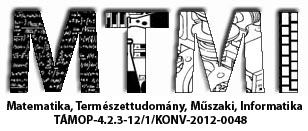Environmental and occupational risk of the pyrethroid insecticide phenothrin
Előadás adatai
Phenothrin (also called sumithrin) is a pyrethroid pesticide that belongs to the type I synthetic pyrethroid group. It is widely used in the industry since the 1970’s. While phenothrin is an effective pesticide and used in various applications such as in agricultural plant spraying and shampoo against lice, recent studies pointed out its neurotoxic side effects. Type II pyrethroids, such as cypermethrin and detamethrin, have been intensively evaluated according to their potential oxidative impact and tumor inducing nature. On the other hand, although various toxicological studies on phenothrin are noteworthy, there is no available scientific information regarding the genotoxic properties of phenothrin. The objective of this study was to assess the potential DNA-damaging effects of phenothrin in an in vitro genotoxicity model.
Isolated human peripheral blood lymphocytes were exposed to phenothrin in vitro. DNA damage induced by 1 hour treatment at 37°C with increasing concentrations of phenothrin (0-1000 μM) was measured with the alkaline version of comet assay and characterized by tail DNA%, tail length and tail moment parameters. The genotoxic effect of phenothrin was analyzed by setting dose-response curves. Median values of DNA damage induced by various doses of phenothrin in repeated experiments were compared with the data of untreated cells by Student's t-test.
Phenothrin exposure induced concentration dependent increase of DNA damage. Statistically significant (p<0.05) genotoxic effect could be detected at the two highest concentrations (500 μM, 1000 μM) in the examined cells when measured with the parameter of tail DNA. At 500 µM 300% increase and at 1000 µM 350% increase was detected over the background level. Tail moment and tail length parameters showed statically significant increase at the three highest concentrations (100 μM, 500 μM, 1000 μM) with 1300% increase of tail moment values over the background at the highest dose.
These findings support the hypothesis that phenothrin can be considered as a possible genotoxic agent. As a consequence, its handling under stricter regulations in the future is strongly recommended.
Támogatók: Támogatók: Az NTP-TDK-14-0007 számú, A Debreceni Egyetem ÁOK TDK tevékenység népszerűsítése helyi konferencia keretében, az NTP-TDK-14-0006 számú, A Debreceni Egyetem Népegészségügyi Karán folyó Tudományos Diákköri kutatások támogatása, NTP-HHTDK-15-0011-es A Debreceni Egyetem ÁOK TDK tevékenység népszerűsítése 2016. évi helyi konferencia keretében, valamint a NTP-HHTDK-15-0057-es számú, A Debreceni Egyetem Népegészségügyi Karán folyó Tudományos Diákköri kutatások támogatása című pályázatokhoz kapcsolódóan az Emberi Erőforrás Támogatáskezelő, az Emberi Erőforrások Minisztériuma, az Oktatáskutató és Fejlesztő Intézet és a Nemzeti Tehetség Program



